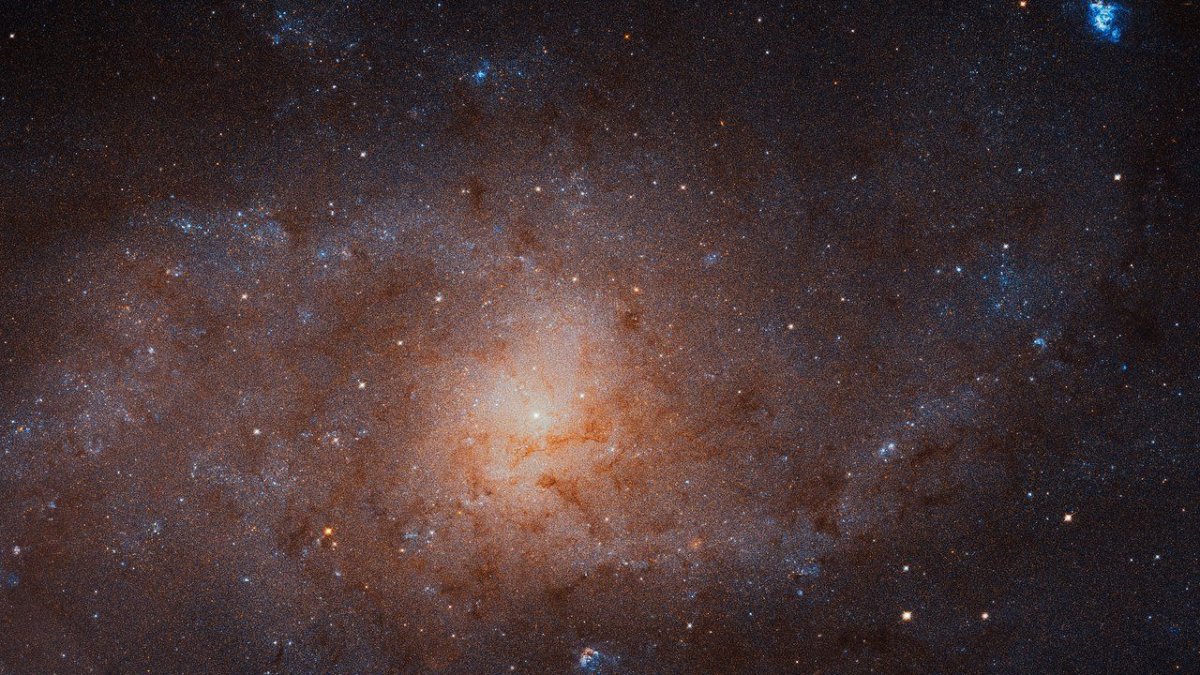The Hubble Space Telescope has taken an incredible image of the Triangulum Galaxy—one of the biggest and closest galaxies to the Milky Way. It is made up of a whopping 665 million pixels and was created by a mosaic of 54 separate images. The end result shows the central part of Triangulum and its inner spiral arms, including an estimated 10 to 15 million stars.
The Triangulum Galaxy is part of our "Local Group." This is the galaxy group the Milky Way belongs to. After Andromeda and the Milky Way, it is the third largest galaxy in our cosmic neighbourhood, spanning 60,000 light years.
Read more: "Great collision" could wake up the supermassive black hole at the Milky Way's center
Hubble, which is run by NASA and the European Space Agency, was used to take a panoramic survey of Triangulum in order to better understand how it formed. By combining this detailed observation with similar surveys of the Milky Way, Andromeda, and other galaxies in the Local Group, astronomers will be able to learn more about how stars form and evolve.
Triangulum, also known as Messier 33 or NGC 598, is made up of around 40 billion stars. It can be seen with the naked eye under the right conditions—it appears as a "faint, blurry object in the constellation of Triangulum," a statement from Hubble said.
The latest image was taken with Hubble's Advanced Camera for Surveys. This has a wide field of view—almost twice that of the space telescope's previous camera—meaning it can map huge areas of the sky in extreme detail.
"In contrast to the two larger spirals, the Triangulum Galaxy doesn't have a bright bulge at its center and it also lacks a bar connecting its spiral arms to the center," the statement said. "It does, however, contain a huge amount of gas and dust, giving rise to rapid star formation. New stars form at a rate of approximately one solar mass every two years.
"The abundance of gas clouds in the Triangulum Galaxy is precisely what drew astronomers to conduct this detailed survey."
During star formation, the clouds of gas and dust in galaxies are used to fuel growth. The new image from Hubble shows two of the four brightest regions of Triangulum. One of these is the second brightest region of ionized hydrogen found across the entire Local Group—making it ideal for the study of stellar evolution.
Another important feature of Triangulum is the orderly nature of its spiral. Unlike other galaxies, dust is distributed throughout it. "Astronomers think that in the Local Group, Triangulum has been something of an introvert, isolated from frequent interactions with other galaxies while keeping busy producing stars along organized spiral arms," another statement said. "Uncovering the Triangulum galaxy's story will provide an important point of reference in understanding how galaxies develop over time, and the diverse paths that shape what we see today."

Uncommon Knowledge
Newsweek is committed to challenging conventional wisdom and finding connections in the search for common ground.
Newsweek is committed to challenging conventional wisdom and finding connections in the search for common ground.
About the writer
Hannah Osborne is Nesweek's Science Editor, based in London, UK. Hannah joined Newsweek in 2017 from IBTimes UK. She is ... Read more
To read how Newsweek uses AI as a newsroom tool, Click here.








